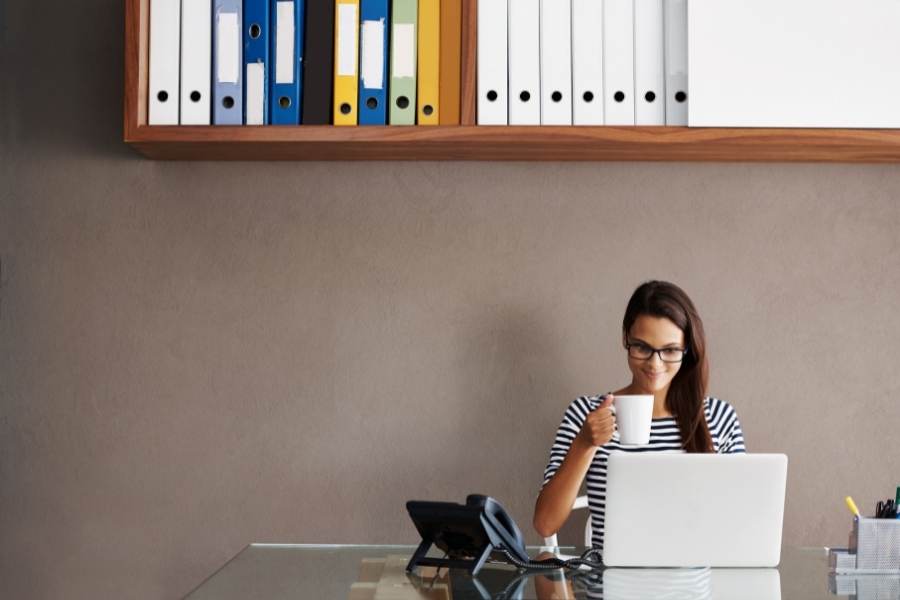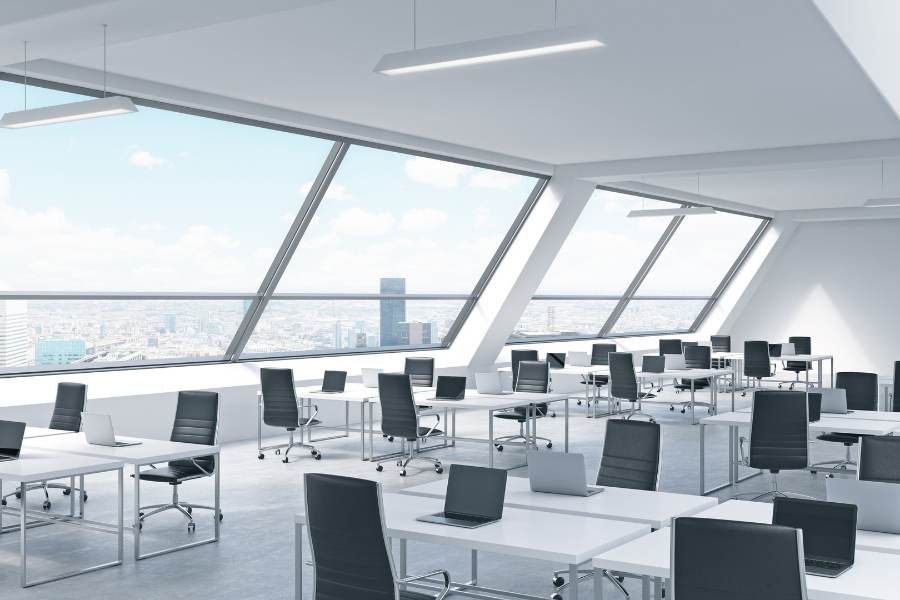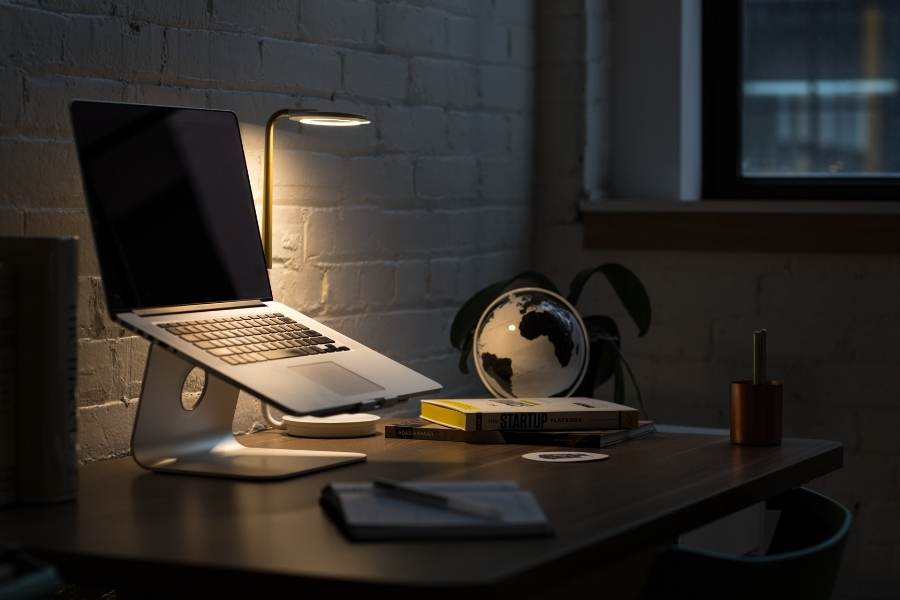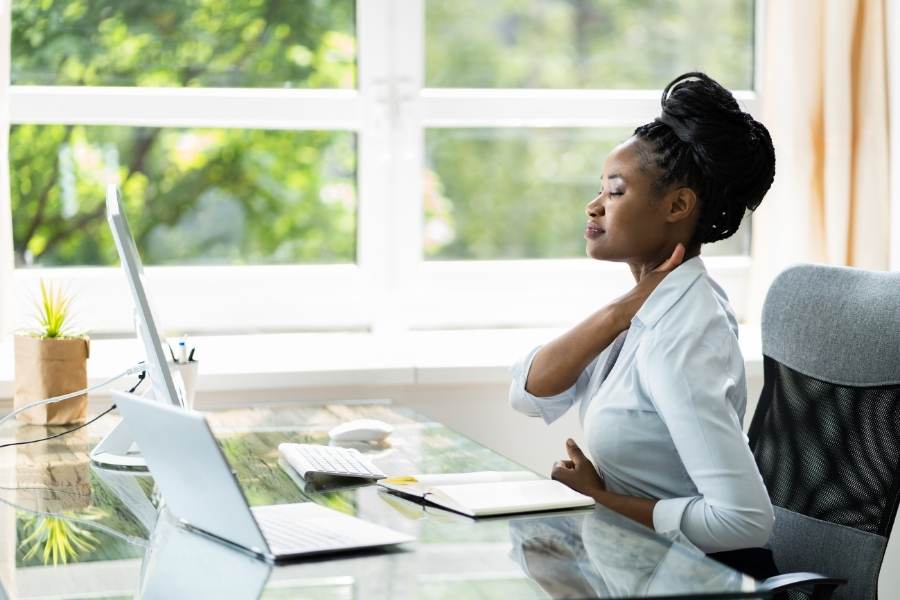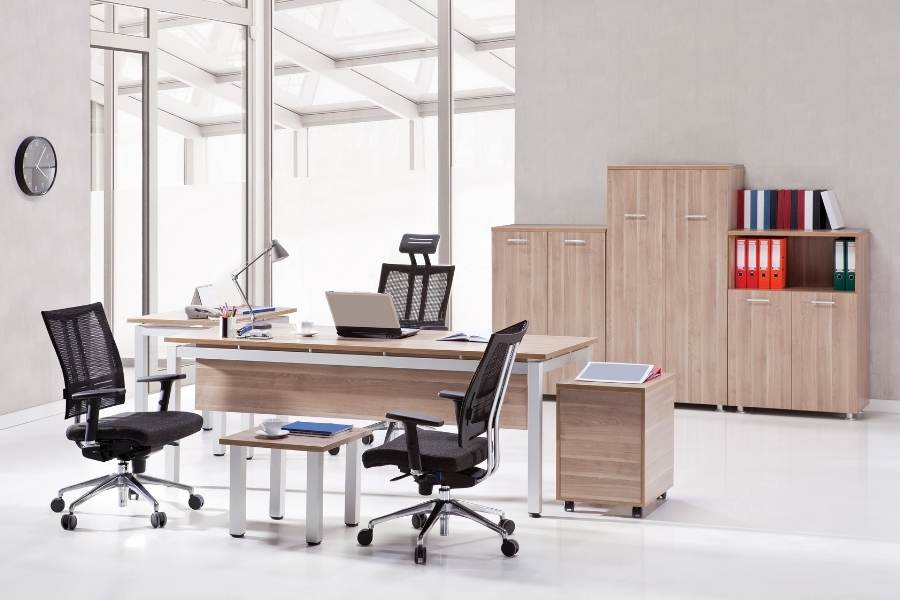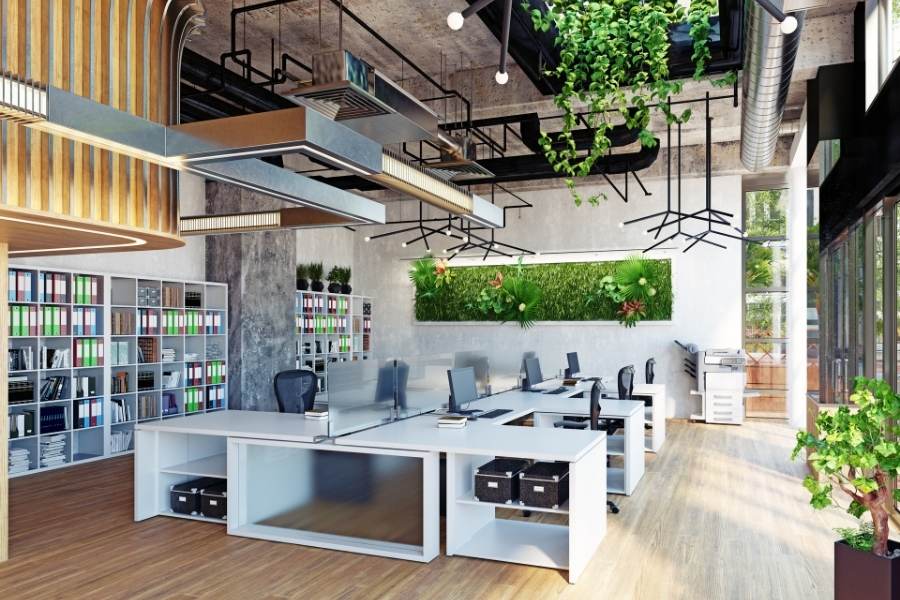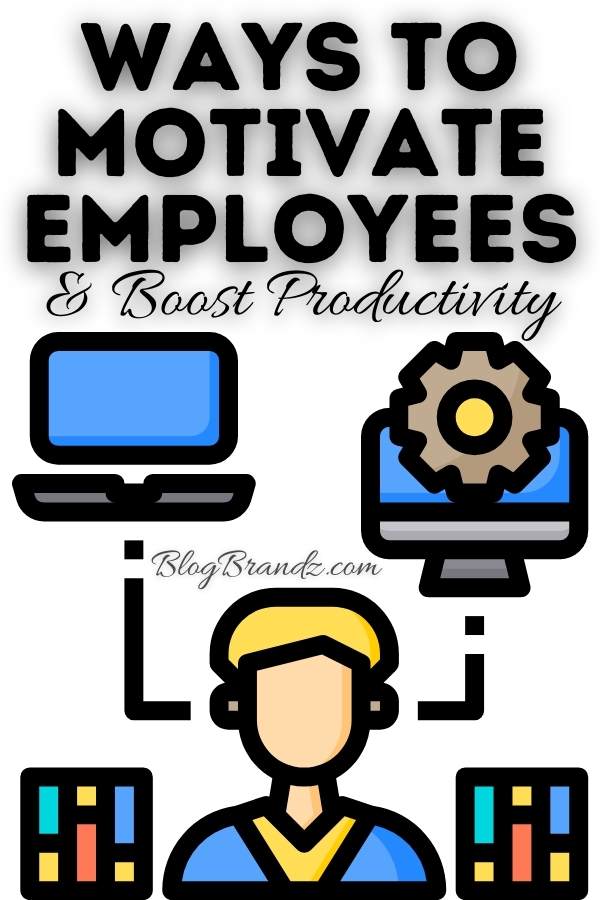Workplace design is one of the best employee motivation strategies to create happy employees and boost employee engagement and productivity in the workplace.
A study by Gallup.com revealed that 13% of employees are actively disengaged at work. Today, many companies are making more efforts toward motivating employees in the workplace.
Changing your workplace design is one of the best ways to motivate employees and improve employee well-being and productivity. This is an effective non-financial motivation strategy that has the potential to create engaged and happy employees.
Your office design sends a clear message to employees and visitors about your company’s culture, vision, and goals. It also has an impact on employee morale and productivity in the workplace.
Indeed, a well-designed office can make a significant impact on employee motivation and empower them to deliver their best work, boost their productivity, and build a nurturing company culture.
Contents
How to create happy employees & boost employee motivation with workplace design
Happy employees work better and a happy workplace is a productive workplace. This article discusses five ways that workplace design affects employee motivation and productivity.
You’ll learn how workplace design influences work motivation and how to design a workplace that enhances employee motivation and productivity.
#1. A quiet work environment improves concentration
Excessively noisy offices cause workplace distractions that hamper employee productivity.
Work-related phone calls, chatty coworkers, phone notifications, and other disruptions can interrupt employees while working and affect the productivity of the entire team.
Creating a quiet work environment is the first step toward designing a workplace that ensures increased employee productivity.
Providing employees with quiet workspaces allows them to focus completely on their tasks, complete them on time, and feel a sense of accomplishment and satisfaction.
Here are some workplace changes to decrease noise and other distractions to increase employee productivity, improve well-being and reduce absenteeism in workplaces.
- Encourage employees to use noise-canceling headphones to cut out external noise.
- Mark certain areas in the office as silent zones, or create quiet work pods to allow employees to work privately on tasks that require 100% concentration.
- Soundproof the pantry area, break room, and meeting rooms to ensure the noise doesn’t reach employees working at their desks.
#2. Appropriate lighting & attractive aesthetics elevate employee mood
Imagine walking into an office with a poor lighting system versus entering an open and colorful workspace that’s brightly lit. Which one would you prefer? The latter, no doubt.
Your workplace lighting system plays a crucial role in ensuring productivity. Poor lighting leads to eye strain, headaches, fatigue, and stress, while excessive lighting can also cause headaches and fatigue.
A well-designed workplace with appropriate lighting can stimulate your employees’ moods and motivate them to work to their full potential, thereby boosting employee efficiency and productivity.
Here are some ways to ensure adequate and appropriate illumination throughout your workspace and boost employee well-being and productivity:
- Ensure that the lighting offers a healthy balance of natural and artificial light.
- Invest in good quality LED lights in various designs and colors based on your office interiors.
- Replace all flickering lights as they can trigger migraines in some people.
- Reduce the shadows created by installing the right light fixtures.
- Install small lights, such as task lights or desk lamps, on workstations.
Good lighting also complements your office aesthetics. Beautiful workspaces are more welcoming than ones with generic (read, dull and boring) workplace decor.
A well-designed office with good interiors can also elevate employees’ well-being, alleviate stress, and improve employees’ mental health, boosting their productivity.
#3. Ergonomic furniture delivers comfort to employees
Employees spend at least eight hours a day at their desks. Your office furniture, especially chairs and desks, must offer comfort to your employees and allow them to work without pain.
Uncomfortable seating can result in potential health risks, fatigue, and physical strain. Using ergonomic furniture designed to support good posture and comfort is essential for workspaces.
Ergonomic furniture is designed to offer employees maximum comfort and reduce the risks of back problems, joint pain, neck pain, and other musculoskeletal problems. This can lead to fewer instances of absenteeism due to health reasons.
Well-designed furniture also gives employees the flexibility to adjust their seat height, back, and armrests, according to their preference making their workstations more efficient, and increasing productivity.
Here are a few ergonomic furniture examples:
- Adjustable chairs with arm rest, head rest, and seat tilt support
- Height-adjustable desks
- Footrests
- Keyboard and mouse support
- Laptop stands
#4. Redesign workspace layout for health & safety
Open workplaces were increasingly popular before the pandemic and almost replaced traditional cubicles. They were preferred by many organizations for the flexibility and team collaboration opportunities they offer.
The open-plan office can bring the entire team together, boost employee motivation, and improve relationships at work. However, COVID-19 exacerbated workers’ worries about returning to jobs in these open-floor plans, and rightfully so.
While financial motivation can work to increase employee motivation in the workplace, in the post-COVID workplace employees have many concerns, especially around health and safety.
It’s essential for organizations to consider their workers’ concerns around health and safety if they want them to feel comfortable returning to the workplace.
Here are some ways to understand your employees’ fears and needs so you can design a workplace that boosts team motivation while helping them stay safe and healthy.
- Understand your team’s workspace needs. Send out a survey to understand their workday, challenges, and more.
- Design your office layout taking employee fears and feedback into consideration and choosing a layout that ensures their needs for safety are met.
#5. Fully-functional workspaces enhance employee experience
Employee experience plays a major role in the success of any organization. Workplace design is one of the factors that contribute to a better employee experience.
Here are some tips you can implement when designing your office space to maximize employee engagement:
- Convey your company culture with the help of your office design. For example, brand your space with wall art, illustrations, and motivational quotes that depict the culture you wish to cultivate.
- Gather suggestions from employees about designing their workstations. This will make them feel more valued and connect with your organization at a deeper level.
- Adopting modern infrastructure and amenities to help employees complete their tasks without any hurdles, such as conference rooms equipped with virtual connectivity devices.
- Offer a fully-stocked pantry and recreational areas for employees to rewind and relax after a long day at work.
- Organize fun games, festival celebrations, and other events to promote creativity and boost employee motivation and morale.
Keep in mind that happy employees are the best ambassadors of your organization. They can help you attract new talent and retain existing talent by lowering your worker attrition rate.
So focus on building a fully functional workplace where employees love to work. Whether you’re changing the layout of the desks, replacing the lighting system, or using Feng Shui for office decor, every workplace design change should be implemented thoughtfully as it directly impacts employees.
By focusing on the key aspects of office space design, such as desk layout, furniture, safety, and aesthetics, you can build efficient workspaces that boost employee engagement, satisfaction, and well-being.
We hope this article has helped you understand the role office space design plays in improving employee productivity and creating engaged, happy employees.
Also read:
- How To Build Inclusive Leadership and Diversity in Management
- The Remote Workplace Guide To Managing Remote Teams
© 2022 – 2023, Aanya Rachel. All rights reserved.
Aanya Rachel is the Content Manager at The Address, a coworking space in Indore, Madhya Pradesh. She is passionate about sharing her knowledge, experience, and extensive research in this field. She writes on a wide range of topics related to coworking, the growth of remote workers, startups, and real estate.
Discover more from Business & Branding Tips
Subscribe to get the latest posts sent to your email.

